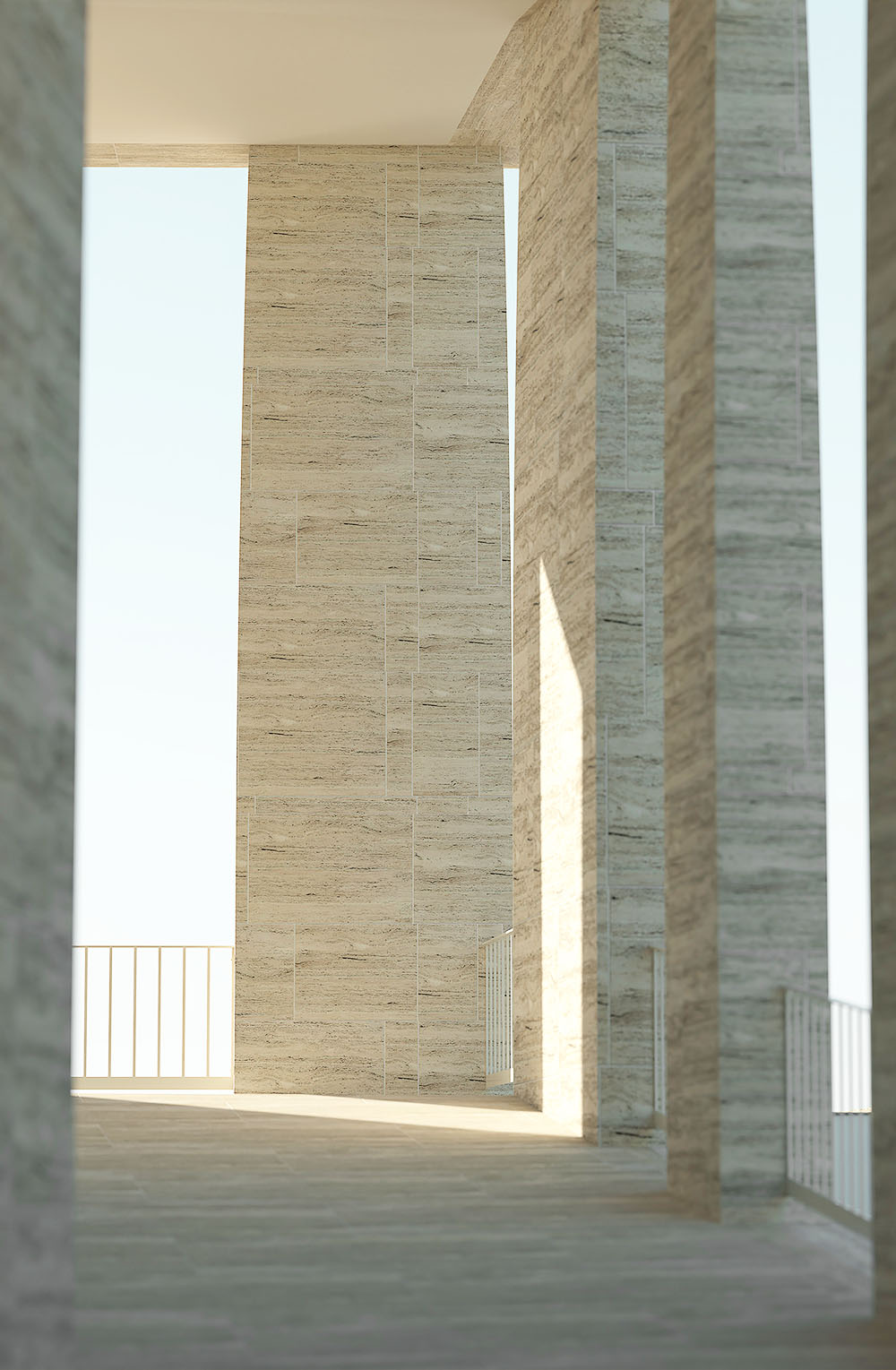Salire
The museum’s subject is not just the exhibits it houses inside, but also the city as an artifact per se. For this reason, the various topics are always presented in a comparison of the content and the current cityscape.
The circulating, rising
peristasis

3D-Dia-Slide

The ascent of the time-ramp ends in the roof garden, the last exhibition space, in which ancient originals are shown under daylight. At the last corner of the outer walkway, the height of the pillars, that taper towards the top, rises abruptly. It's the start of a very open area. At the end of the ramp visitors will be joined by a wide variety of marble sculptures. They may rest in the shade of the protruding roof or enjoy the sun near the central flowerbed. Two olive trees are enclosed by a bench made of travertine: the material that covers the entire structure.